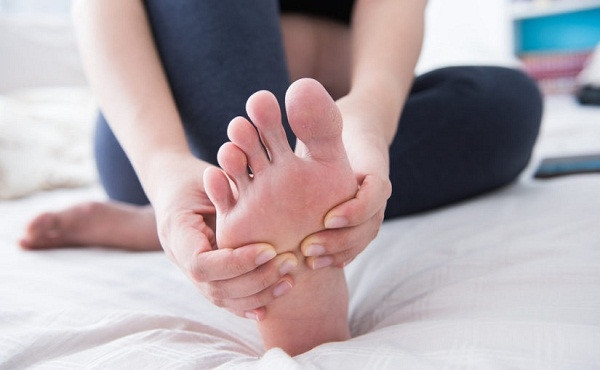Restless legs syndrome is a sensorimotor disorder that occurs more often in women than in men. It can be difficult to describe to someone who has never had it and can sometimes be difficult to diagnose.

What is restless legs syndrome?
Restless legs syndrome (RLS), also known as Willis-Ekbom disease, causes unpleasant, uncomfortable sensations in the legs and an irresistible urge to move them. It is a sensorimotor disorder that affects both the sensory and motor systems in the body.
Symptoms of this condition typically occur in the late afternoon or evening, often increasing at night when the body is at rest. But it doesn’t just happen during sleep, symptoms can occur any time the sufferer is inactive or sits for a long time. And while it usually occurs in the legs, in rare cases, people have reported similar feelings of restlessness in the arms, face, torso, and even genitals.
Symptoms of restless legs syndrome and its impact on life
In general, RLS symptoms include an urge to move, often accompanied by unpleasant sensations. These specific sensations are often difficult to describe, but many sufferers describe them as “painful, throbbing, pulling, itching, tickling, or creepy.” These sensations may occur on one side, both sides, or may alternate between sides of the body.
Because of these symptoms, “RLS often causes sleep disruption.” And while the initial symptoms are usually in the evening, people with RLS often feel worse the next day as a result. RLS is one of several disorders that can cause daytime fatigue and sleepiness, and can have a negative impact on mood, concentration, work and school performance, and personal relationships. In fact, “untreated moderate to severe RLS can lead to about a 20 percent loss in work productivity and can contribute to depression and anxiety,” according to the NINDS.
RLS is also accompanied by periodic limb movements of sleep (PLMS), 80% of people with RLS also have PLMS, characterized by involuntary jerking of the legs or arms during sleep that can occur every 15 to 40 seconds, sometimes throughout the night. However, it is important to note that while many people with RLS also have PLMS, not everyone with PLMS has RLS.
What causes restless legs syndrome?
In most cases, it is not fully understood what causes RLS in people without other underlying conditions. This is called primary RLS. However, there is evidence that low iron levels may be a contributing factor. Certain gene variants have been linked to RLS, and can be found in families where symptoms appear before age 40.
There is also considerable evidence that RLS is associated with dysfunction in the basal ganglia, one of the parts of the brain that controls movement, using the brain chemical dopamine. Dopamine is needed to produce smooth, purposeful muscle activity and movement. Disruption of these circuits often results in involuntary movements.
RLS has also been found to be associated with the following underlying conditions or factors:
• End-stage renal disease and hemodialysis
• Certain medications such as antiemetics, antipsychotics, antidepressants, and some antihistamines
• Use of alcohol, nicotine and caffeine
• Pregnant
• Neuropathy or nerve damage
• Neurological diseases such as multiple sclerosis or Parkinson's disease
Diagnosis and treatment of restless legs syndrome
RLS is diagnosed clinically by evaluating a person for stereotypical symptoms. In general, RLS becomes clinically apparent when the onset and maintenance of sleep are disrupted. Although there is no specific test for RLS, a doctor will evaluate each individual case based on five basic criteria:
• A strong and often excessive need or urge to move the legs, often accompanied by an unusual, unpleasant, or uncomfortable feeling.
• The urge to move the legs begins or increases during rest or inactivity.
• The urge to move the legs is at least temporary and is partially or completely relieved by movement.
• The urge to move the legs begins or increases in the evening or at night.
• The above four characteristics are not due to any other medical or behavioral condition.
There is currently no cure for RLS, but treatment focuses on controlling the condition, reducing symptoms, and increasing the amount of restful sleep you get. Ensuring that iron levels are normal, ruling out other sleep disorders that can aggravate RLS, and eliminating habits that can make RLS worse, including alcohol and caffeine, are the first steps in treatment.
There are relatively few medications that can be used to treat RLS. First-line treatments include anti-seizure medications, such as gabapentin or pregabalin. Dopamine medications, primarily used to treat Parkinson's disease, can also be effective, as can opiates, which are used primarily in cases of severe RLS-specific side effects.
Unfortunately, RLS is a lifelong condition, but with current treatments, symptoms can be minimized and good sleep can be achieved. While it is always a good idea to see a doctor if RLS is interfering with your daily (and nightly) life, if your RLS symptoms are mild and do not cause significant discomfort or disruption to sleep, the condition may not require treatment.
According to Dan Tri